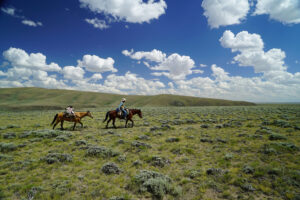The culture wars of an expansionist era inspired Charles Deas, but he lost his own battle with madness and obscurity.
“From what we can see of it over the shoulders of the hundreds crowding around,” raved the New Mirror in 1844, “it is a chef d’oeuvre.” Charles Deas (pronounced days) was just 25 when the painting he called Long Jacques created a sensation in New York City. The American Art-Union bought the canvas for a handsome $500—and Americanized the French fur trapper’s name, symbolically staking claim to the frontier. When Deas traveled west to paint in 1840, he settled in what one Easterner called “the outer verge of our civilization”: Missouri. To the west was the Louisiana Territory, purchased from the French, and California, held by Mexico. South was the nation of Texas, with Russia and England in the north—all vying with American Indian tribes for land. The tensions are visible in Deas’ work: Jacques sits his horse in a cavalier’s pose but also wears quillwork. One critic of the day noted the painter’s mastery of the “juxtaposition of civilized and savage life.” A half century later, Frederic Remington would reinvent dualistic Western iconography with cowboys and Indians. But by that time the West was won, and the portraitist of Long Jakes was long forgotten.
Man and Beast
Deas started out a “civilized” Easterner rather than a “wild” Westerner. Born in Philadelphia, he lived with relatives in New York while studying at the National Academy of Design. Humorous scenes drawn from literature brought him modest success, and it is apparent that in this pre-Civil War era he was already pondering race and what it meant to be human. At 21, Deas reinvented himself as a painter based in St. Louis, joining wilderness expeditions with U.S. troops as they negotiated with tribal leaders. When he took on the trappings of a trapper, the soldiers dubbed him “Mountain Man.” One said he had “the secret of winning the good graces of the Indians,” to whom he spoke in French using comic gestures that made “the whole lodge burst into a roar of laughter.”
Trail’s End
After six years in the wilderness, shipping such theatrical works as Death Struggle back East to show, Deas returned to New York. His work became increasingly visionary—and unmarketable. In 1848, he was admitted to Bloomingdale Asylum “troubled with a religious anxiety” to die there two decades later, at 48. Only recently has his work been catalogued and reexamined. Amherst professor Carol Clark tracked down his surviving work in dusty corners and private homes for a recent Denver Art Museum exhibit and companion book, Charles Deas and 1840s America (University of Oklahoma Press). She suggests that Death Struggle depicts Deas himself trying to escape his demons. They caught him in the end, alas, when his internal landscape proved wilder even than the West.
Originally published in the June 2011 issue of American History. To subscribe, click here.




